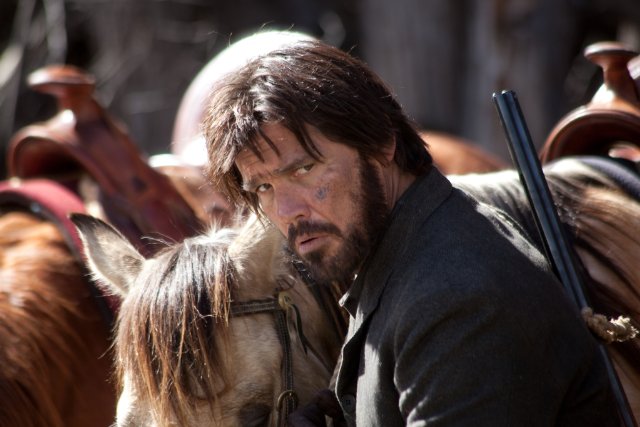True grit
She arrived in Fort Smith with two long braids, her father dead in the street, bent on revenge and calling it justice.
All of fourteen, she carried the aura of a professional. She would quote the law. She would spook old men. She would hire the marshall least likely to take the man alive. She would look like Judy Garland and act with the iron, or the “sand,” or the “True Grit” of Cate Blanchett.
And Mattie Ross would be torn between two men. The one-eyed marshal would begin as the avenger, turn to the brute, then end as the father. The Texas Ranger would turn from a menace to a mystery to the first breeze of a lover. For this is the moment in a girl’s life when men transform from the myths of mother’s stories into the angels and beasts of reality.
It would be as if the tornado tore Dorothy’s house off of the Kansas prairie and dropped her in the middle of Terrence Malick’s “Badlands.” And she would share with Sissy Spacek’s Holly a basic reality: two adolescent women piecing together manhood after wandering into violent and unforgiving circumstances.
And like Holly she would enter a world of masculine excess as a child play-acting maturity. She would shake down a stable owner. And ford rivers deep into Injun Country. And cut down corpses hanging from trees without a tear. Yet when the time came to buy a pony, she would names it “Little Blackie” and ride it like a child. For a moment we would leave a dark Western and enter a Disney pony movie. She might as well name it Flicka.
And the days that a teenage girl spent deep in the Choctaw wilderness with a one-eyed man would be an innocent adventure. And a trip into the violent heart. And a lesson that no matter how smart you are, things don’t always go as you expect.
And the Western always bears the psychological landscape of a man’s world – all fatalism and desperation and a man’s gotta do what a man’s gotta do. And the women of Westerns have always been seen as forces of civilization, viewed with suspicion and inevitability. And how does the Western change when shot through the gaze of a female and an innocent? And how does it change with that lasting female illusion – that through wits, and stubbornness, and playful campfire stories, she can tame a man?
With so much contradiction to play, with so much to embody, the newcomer Hailee Stanfield has been the object of deserving praise. A standout performance from a young performer leads inevitably to questions of how far she can go, what she will do next. Perhaps that’s not the way to look at such a performance. Perhaps “True Grit”– like the children of Malick films – is the one film she was born to make. (And if I don’t mention Jeff Bridges much – or Roger Deakins, or whoever – it doesn’t mean I think any less.)
And what has gotten into The Coen Brothers? Where are the filmmakers who gave us the world’s most passive sheriff? Who tossed us a tornado and told us not to read the mind of God? After making a string of cynical films, how do a pair of snowy Minnesotans turn around and make a story this overtly sentimental? Did they give up Nihilism for Lent? I suspect not. They’re Jewish.
Here is what I suspect. At the movies, we’re watching a movement away from cynicism toward sentimentality. You see it in “Inception.” You see it in “Unstoppable.” You see it in “The Town.” You see out your window each morning that cynicism is getting us nowhere. That we need to meet the world with resourcefulness rather than resignation. That we are in need of an age of heroism to solve the times in which we live.
news via inbox
Nulla turp dis cursus. Integer liberos euismod pretium faucibua



